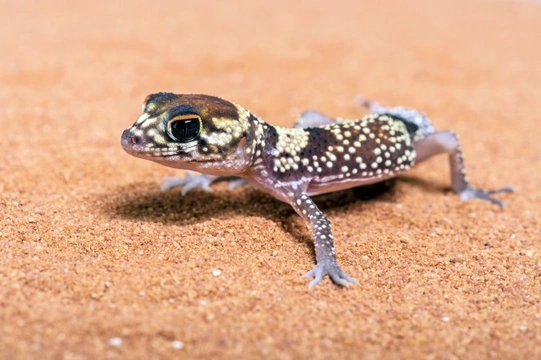
Twenty two fun and interesting facts about lizards
Lizards are one of the most interesting and diverse species on the planet, and as well as the huge number of different species that live in the wild, several breeds of lizards can also be kept as pets within the domestic home, in a specially arranged vivarium to provide for all of their needs. From small beginner pets such as the skink and anole to huge specimens such as the monitor lizard that can grow to five feet long or more, lizards are growing in popularity among reptile keepers all over the world.
If you are interested in keeping a pet lizard or already own one and just want to read up on some facts, this article will introduce you to twenty two fun and interesting facts about pet lizards that you may not already know. Read on to learn more!
- The largest species of lizard in the world can grow up to around ten feet; this is the Komodo dragon, and is one of the most impressive species of them all, thanks to their size! The smallest of all lizard species are tiny, growing to under 3cm in length.
- The vast majority of lizard species are not venomous, however there are two species that are thought to have a toxic venom; these are the Mexican bearded lizard and the Gila monster.
- Most species of lizard continue to grow teeth throughout their life, and if teeth are lost, they simply grow in replacements!
- A couple of species of lizard have “horns” near their eyes, which they can use to squirt blood for a distance of as much as 4ft. This is a type of threat defence, and is used as a deterrent and defence mechanism when they feel that they are under threat.
- The gecko has a type of vocal cords that allow them to make verbal sounds. All of the other known lizard species are silent, and communicate with body language alone.
- When there is no access to water available, lizards can conserve their existing water reserves by excreting salt through their skin. A white, salty residue on the body therefore should be taken as a sign of dehydration.
- Some types of lizards can change the colour of their skin as the mood takes them, while some change to match their environment.
- Lizards are excellent climbers, and some can even run backwards down vertical surfaces at a very high speed!
- There are over 5,500 different lizard species recognised worldwide.
- The skinks are the largest known class of lizards, with at least 1,300 known species.
- Most people think that lizards reproduce by laying eggs, and for the most part this is true; however, some species give birth to live young!
- Lizards are thought to be related to dinosaurs, and have been extant on the planet for over 200 million years. Some lizards would originally have been as large as dinosaurs!
- When lizards feel endangered or threatened, they can detach their tail as part of a ploy to escape. Their tail will grow back in time, but it will usually be thinner than the original!
- Most lizards have legs, but some species do not! These are often confused with snakes. You can tell the difference between a snake and a legless lizard by looking at the head; if there are eyelids and external ears present, you are looking at a lizard and not a snake.
- Lizards use their tongues to smell! This is why lizards, like snakes, often flick their tongues in and out of their mouths at high speed; they are scenting the air around them.
- Lizards can be found on every single continent of the world, with the exception of Antarctica.
- Lizards continue to grow in size throughout their lives. In order to allow them to continue to grow, they will shed their skin on occasion to grow in a larger, more comfortable skin to take account of their growth!
- Lizards are cold blooded, and this is why they love to bask in sunlight and bright light.
- The vast majority of lizard species are arboreal, which means that they live in trees. Those that do not live in trees may burrow, and others are semi-aquatic, and swim well. Certain forms of lizards can also glide, making them look as they are flying, such as the Flying dragon lizard, which is native to the forests of South East Asia.
- The gecko is one of the few species of lizards that do not have any eyelids.
- However, the toes of the gecko are very interesting, having rounded toes that are very grippy, making them one of the best climbers of all of the lizard species.
- Iguanas have rows of spiny protrusions on their backs, which run in rows all along their backs and tails.



